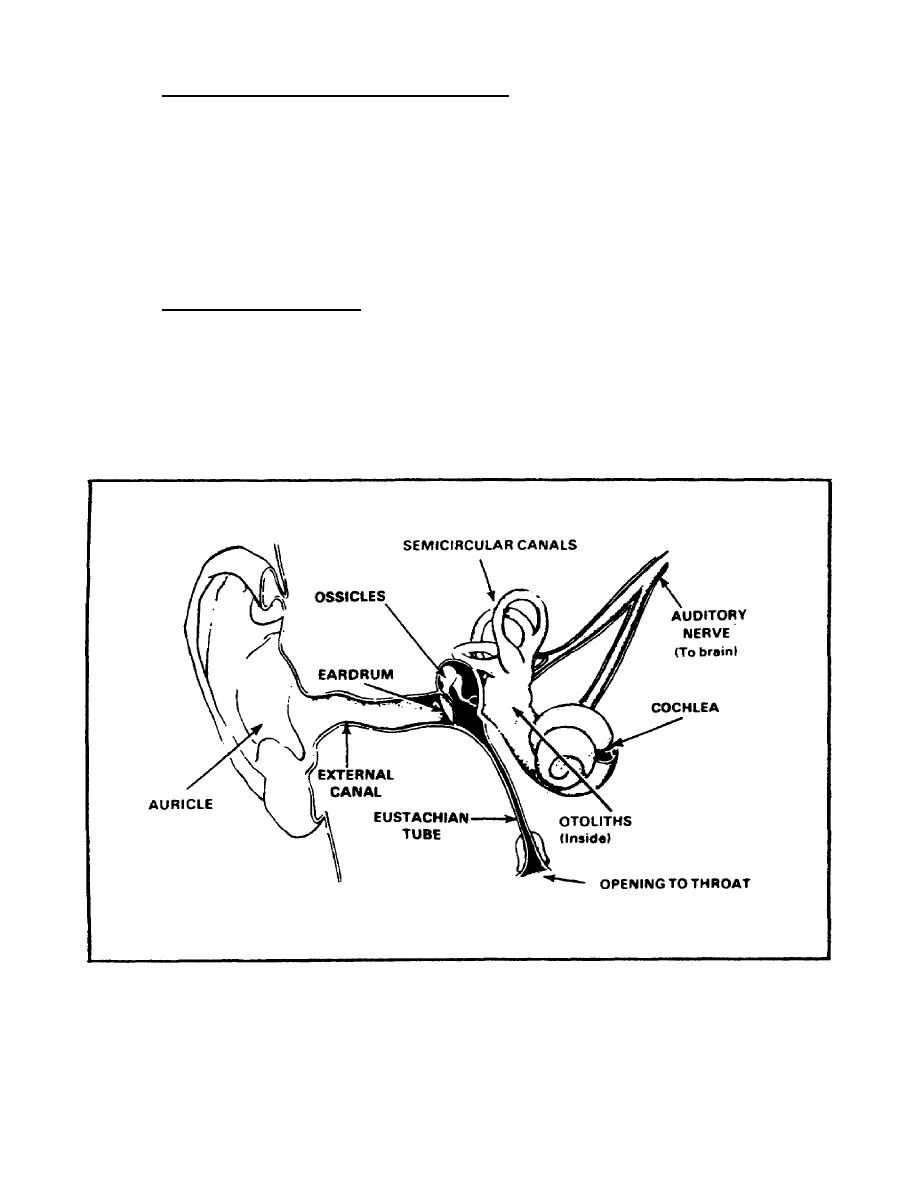
b. Dealing With Spatial Disorientation. The only way to deal with
spatial disorientation (equilibrium limitations) problems is through
education. Therefore, you must know the bodily mechanisms used to determine
equilibrium (balance) and how they are affected by a flight environment.
2.
MECHANISMS OF EQUILIBRIUM
The mechanisms of equilibrium are vision, vestibular apparatus and the
proprioceptive system. The mechanism of vision (perception, illusion and
night vision) has been detailed in Lessons 2 and 3, hence, only the
vestibular and proprioceptive mechanisms will be covered here.
a. Vestibular Apparatus. The inner ear contains the vestibular
apparatus which is the body's motion and gravity detecting sense organ. It
is located in the temporal bone on each side of the head. Each vestibular
apparatus consists of two distinct structures (otolith organs and the
semicircular canal which contains the otolith organs) as shown in Figure 13.
Both the otolith organs and the semicircular canal will sense changes in
aircraft performance. The otolith organs will sense changes in linear
acceleration or gravity and the semicircular canals of the inner ear will
sense changes in angular acceleration.
Figure 13.
Vestibular apparatus of the inner ear.
38


 Previous Page
Previous Page
